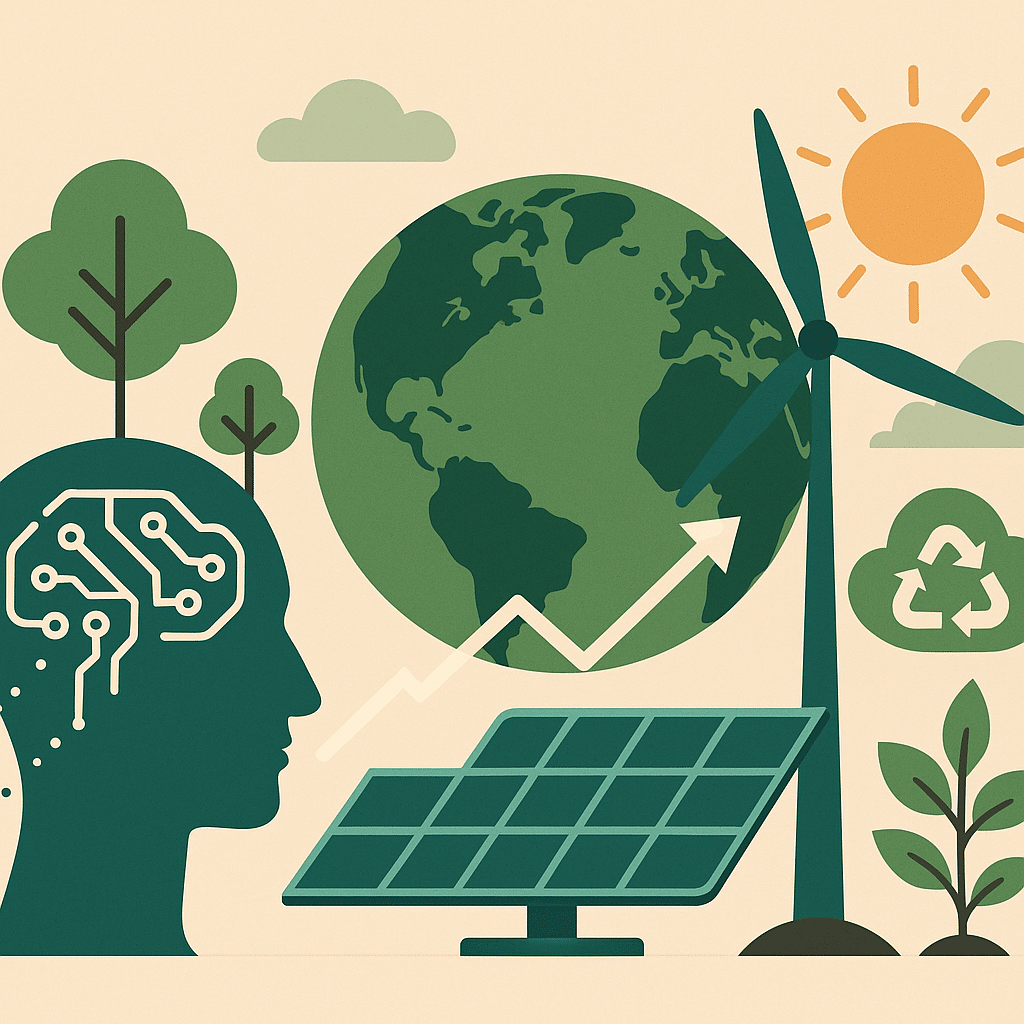Introduction
The Role of AI in Climate Change and Sustainability. Climate change is one of the most pressing challenges facing humanity today. Rising global temperatures, extreme weather events, sea level rise, and loss of biodiversity are all symptoms of a planet under stress. As governments and organizations seek innovative solutions, Artificial Intelligence (AI) has emerged as a powerful tool to combat climate change and drive sustainability efforts.
AI, with its ability to analyze massive datasets, recognize patterns, and make predictions, is already transforming industries. In the context of the environment, AI has the potential to optimize energy use, predict climate patterns, enhance agriculture, and reduce carbon footprints. This blog explores how AI is being used to address climate change and support a sustainable future.
Table of Contents
Understanding AI’s Capabilities
Before diving into applications, it’s important to understand what AI brings to the table. AI systems can:
- Process large volumes of data faster than humans.
- Learn from patterns to make accurate predictions.
- Optimize systems in real-time.
- Automate repetitive or complex decision-making.
These capabilities make AI ideal for handling environmental data and enabling smarter, faster responses to environmental issues.
AI in Climate Prediction and Monitoring
One of the most important applications of AI in the fight against climate change is predicting and monitoring environmental changes.
1. Weather and Climate Modeling
AI models can analyze historical weather data to improve the accuracy of forecasts. This is particularly important in predicting extreme weather events like hurricanes, droughts, or heatwaves.
For example, Google’s DeepMind has partnered with the UK’s Met Office to improve precipitation forecasting using AI. Their model can predict heavy rainfall with more precision than traditional methods.
2. Satellite Data Analysis
AI is also used to process satellite imagery for environmental monitoring. By analyzing this data, AI can track deforestation, glacier melt, rising sea levels, and land degradation in real time.
Tools like NASA’s Earth Observing System Data and Information System (EOSDIS) use machine learning algorithms to deliver insights from satellite data:
🔗 https://earthdata.nasa.gov
AI in Renewable Energy Optimization
AI plays a critical role in making renewable energy more efficient and reliable.
1. Smart Grids
AI can help manage smart grids by predicting electricity demand and adjusting the distribution of energy accordingly. This leads to reduced energy waste and better integration of renewable sources like solar and wind into the grid.
2. Predictive Maintenance
For wind turbines and solar panels, AI is used for predictive maintenance. It can detect issues before they become major problems, reducing downtime and improving energy output.
3. Solar and Wind Forecasting
By analyzing weather data, AI can forecast solar radiation and wind patterns. This helps energy companies optimize the use of renewable energy sources.
One such example is Google’s DeepMind, which uses machine learning to boost wind energy predictions:
🔗 https://www.deepmind.com/blog/machine-learning-can-boost-the-value-of-wind-energy
AI in Agriculture and Food Systems
Agriculture is both a victim and contributor to climate change. AI can help farmers adapt to changing conditions while reducing the environmental footprint of farming.
1. Precision Agriculture
AI tools can analyze soil data, weather forecasts, and crop health to help farmers make better decisions. This includes when to plant, how much water or fertilizer to use, and when to harvest.
2. Reducing Food Waste
AI is also being used to forecast food demand, helping retailers and restaurants minimize food waste. Companies like Winnow use AI-powered smart bins to track and reduce kitchen waste in commercial kitchens.
AI in Urban Planning and Smart Cities
As more people move to cities, sustainable urban development becomes essential. AI supports smart city initiatives that aim to reduce energy use, cut emissions, and improve quality of life.
1. Traffic and Emissions Management
AI-powered traffic management systems reduce congestion, which in turn lowers fuel consumption and emissions. Tools like Google Maps now use AI to suggest eco-friendly driving routes to reduce carbon emissions.
2. Energy-Efficient Buildings
AI systems manage heating, cooling, and lighting in buildings to improve energy efficiency. Smart thermostats, like those developed by Nest, use machine learning to adapt to user behavior and optimize energy usage.
Challenges and Ethical Considerations
While AI holds great promise, it is not without challenges:
1. Energy Consumption
Training large AI models can be energy-intensive. Data centers that host AI applications also consume significant electricity. The industry is working toward making these systems more energy efficient.
2. Data Privacy
Environmental monitoring often involves collecting large amounts of data, including geographic and personal information. Ensuring data privacy is essential.
3. Bias and Accessibility
AI models trained on biased or incomplete data can produce misleading results. Moreover, access to AI technologies is uneven across the globe, potentially widening the digital divide.
The Future of AI in Climate Action
As AI continues to evolve, its integration into climate action strategies is expected to grow. The development of AI-powered carbon accounting, climate risk modeling, and eco-conscious consumer apps are some promising trends.
Collaboration between governments, tech companies, and environmental organizations is key to scaling these solutions globally.
One global initiative worth exploring is Climate Change AI, a community that promotes research and collaboration at the intersection of AI and climate science:
🔗 https://www.climatechange.ai
Conclusion
Artificial Intelligence offers powerful tools for addressing the climate crisis and building a sustainable future. From optimizing energy systems to monitoring deforestation, AI can help us act faster and more effectively. However, it is essential to use AI responsibly, keeping ethical and environmental considerations in mind.
By combining human ingenuity with machine intelligence, we have a greater chance of creating lasting solutions to protect our planet for future generations.
Find more AI and ML content at:
https://allinsightlab.com/category/ai-machine-learning/

